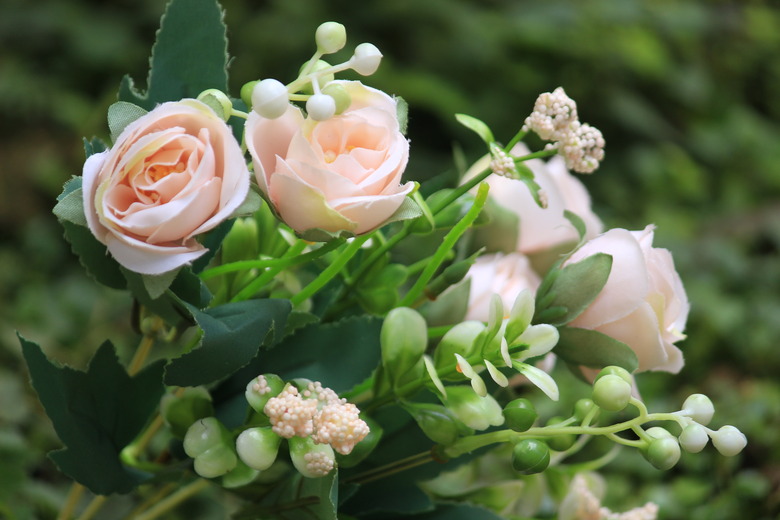The Stems On My Rose Bush Are Turning Black
Roses (Rosa spp.) are stunning to behold, and their fragrance is legendary, but all that luxury requires quite a bit more TLC than you have to give other plants, and that involves disease control. The three most common diseases to afflict roses are black spot, powdery mildew and stem canker, and they are all caused by fungi. The culprit behind stem canker could be Botryosphaeria, Leptosphaeria, Coniothyrium, Cryptosporella or Botrytis, the latter of which can also attack the petals and the leaves.
Insects called cane borers can also be responsible if the stems on a rose bush are turning black. Once established, most fungi and parasitic insects can be difficult to control, and you usually have to prune and discard the affected parts of the plant. If you're going to use a fungicide, the best time to apply it is before symptoms appear. When it comes to rose diseases, the best medicine is prevention.
What Is Stem Canker?
What Is Stem Canker?
Fungi that cause stem canker typically penetrate the woody stem material through a wound caused by poor pruning practices, wind or hail damage or flower harvesting. Once established, the fungal colony causes raised, dark spots to appear on the stem, and as the colony grows, the spots multiply and expand until they girdle the stem, cutting off the flow of water and nutrients. As a result, the upper part of the stem dies back, and anything growing on it also wilts and dies.
Similar damage can be inflicted by cane borers, insect larvae that burrow into the stems and feed on the juices. The damage from cane borers is easy to distinguish from that of stem canker because when borers are responsible, tracks of their progress as they wend their way through the stem are visible, there is often a visible hole and the discolored part of the stem often swells. The ultimate result is the same: Growth on the end of the stem receives little or no nourishment and wilts or dies.
How to Manage Blackened Stems
How to Manage Blackened Stems
No fungicide is available for the organisms that cause stem canker, and the only treatment is to prune the affected parts of the plant and discard them, and you should do this in the spring, not the fall. Choose a place well below the affected area where there is no sign of blackening and make a 45-degree cut with sharp bypass pruning shears that you've wiped with isopropyl alcohol. Check the cut area to make sure that the inner part of the stem has only whitish, healthy material and then wipe the shears again with alcohol.
If cane borers are responsible for the blackening of your rose stems, you may be able to physically extract them depending on how big they are. To do this, you would probe inside the holes with a needle, hoping to snag the larvae and pull them out. If you're successful, seal the holes with carpenter's glue to prevent their relatives from moving in. Don't bother using an insecticide because it won't reach them while they're inside the stem. If physical extraction is unsuccessful, you have to prune and discard the affected parts of the plant.
Keep Your Roses Healthy
Keep Your Roses Healthy
Since you can't treat fungal infections or stem borers easily, the best strategy is to prevent them from affecting your roses. Fungal diseases spread more easily when canes grow together and touch each other, so prune assiduously so that doesn't happen. When pruning, make clean, 45-degree cuts with sterilized shears, and as an added protection, seal the wound with carpenters' glue. Besides controlling fungi that cause canker, this will also discourage borers.
